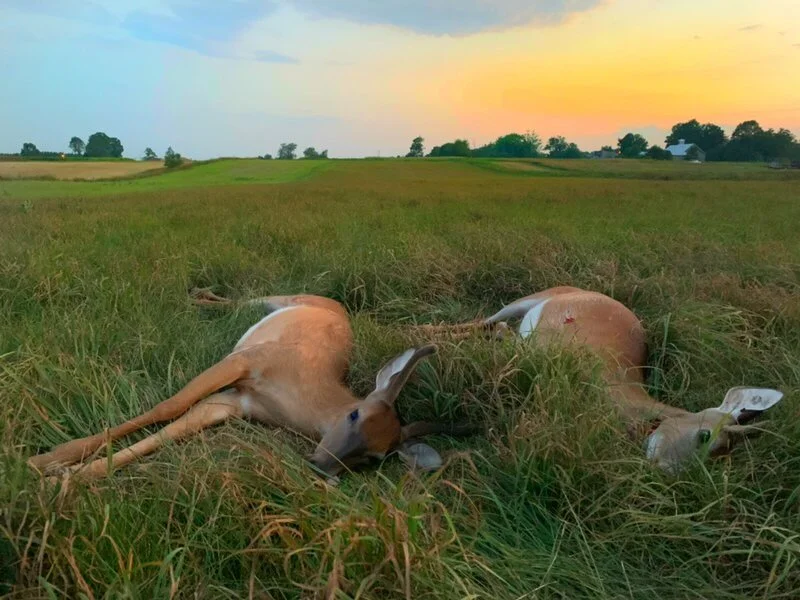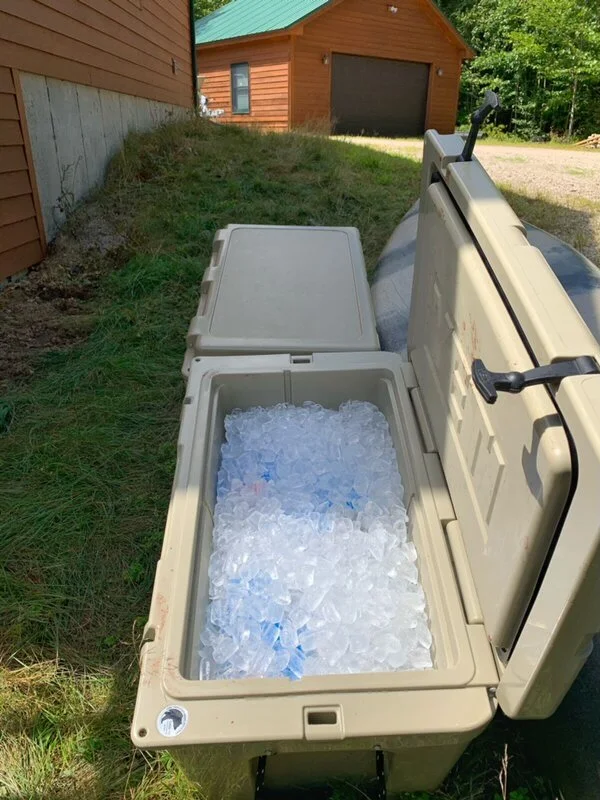Deer Nuisance Tags
Like the rising and falling of the tides, there’s an annual rhythm to the amount of meat piled up in our freezers. We spend the summer and fall filling them up, and the winter and spring slowly eating through what we’ve accumulated. Summertime is — aside from the saltwater fish fillets we’ve put away — our freezers’ equivalent of low tide.
Though most of our hunting seasons are still a couple of months away, late summer is when I start working nuisance permits for deer on a local vegetable farm. It’s important to me, since we eat venison a few nights a week and, in Maine, we typically only get a single deer tag per season. In addition to the judicious use of roadkill — I was recently featured in an Outside article on the topic — nuisance tags are one of the ways we keep venison in our house all year.
Nuisance permits are issued by the local game warden, usually after getting the recommendation of a state game biologist. Typically they’re issued to commercial farmers whose produce is being depredated by wildlife. In this instance, Farmer John was issued 3 deer tags, and I was there to hunt on his behalf. It’s a simple arrangement, I harvest and butcher the deer, and then I share the meat with John’s family.
This is my third summer harvesting deer here, and it’s been such a productive way of adding venison to my freezer that I’ve invested in some specialized equipment. Unlike in the West, in the Northeast, we aren’t usually shooting long distances, and since most of our opportunities happen inside 150 yards, I usually bring a lighter rifle. Here on the farm though, there are shots of nearly 500 yards, so for ethical kills and maximum meat preservation, precision is important. This suppressed bolt-action Remington 700 is chambered in .308 Winchester and is set up for taking longer shots than most of my handier hunting rifles. Using a bipod, my range finder and known ballistic data makes me feel much more confident taking those longer shots.
On this most recent hunt, I harvested two young bucks at dusk, just as they began feeding at the edges of the corn 250 yards in front of me. The permit stipulates that deer can only be shot when feeding in the planted area where the damage is occurring, so it’s important to be patient. To be in compliance I have to let them approach the crop but also try to minimize the damage they do before I take the shot.
One of the most significant challenges of big game hunting in August is the heat since even the nights are typically hot and humid. The air was moist and around 80º F when I was gutting these two and getting them into my vehicle. I packed a 5-gallon bag of ice into the abdominal cavity of each of them and set the AC to high on the hour-long drive home to keep them as cool as possible. Once there, I had to work quickly and methodically to get them broken down and onto a bed of ice in my coolers to continue the cooling process.
Once full, I propped the coolers up at an angle with their drain plugs open, allowing them to drain the liquid water from the melting ice. Now, for the next week or so I’ll just keep packing the coolers with fresh ice each day. If it were late fall, when temperatures reliably stay below 40º F, I’d just leave their carcasses hanging in the garage to age, allowing enzymatic processes to tenderize the connective tissues and build flavor in the meat. But this “wet method” in the coolers accomplishes the same thing even when temperatures are double what I’d need for hygienic dry-aging.
Later this week I’ll finish butchering them, seal the meat in vacuum bags, and deliver a portion back to the farm. The rest will help with the refilling of my freezers for the coming winter. Then we’ll start the process all over again.
There’s a lot of hunters who scoff at hunting deer in this way. It’s not “sporting” they’ll say, or it’s “cheating”. While I can understand how that might make sense to them, for me it’s one of the most enjoyable, reliable, and efficient hunts I’ll do all year. Two beautiful bucks in my freezer in a single evening. If you’re in it for the food, how can you beat that?






